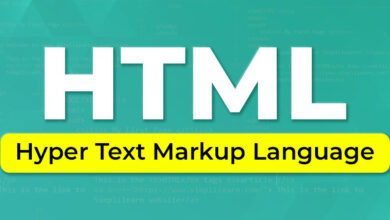The Power of CSS: Elevate Your Web Designs

CSS (Cascading Style Sheets) is a dynamic language that breathes life into the web. With CSS, you have the ability to transform the appearance and layout of your web pages, creating visually stunning designs and captivating user experiences. Whether you are a seasoned web developer or just starting out, understanding and harnessing the power of CSS can take your designs to new heights. Let’s explore the immense potential of CSS and discover how it can revolutionize your web projects.
Style Your Elements:
CSS allows you to effortlessly style HTML elements, giving them a personalized touch. With CSS, you can define colors, fonts, sizes, spacing, and borders, transforming ordinary elements into visually appealing components that align perfectly with your design vision.
Responsive Layouts:
One of the greatest strengths of CSS lies in its ability to create responsive layouts. Using media queries and flexible units like percentages and viewport-based measurements, you can design websites that seamlessly adapt to different screen sizes and devices. This ensures an optimal viewing experience for users across desktops, tablets, and mobile devices.
Engaging Animations and Transitions:
CSS provides a range of animation and transition properties that bring interactivity and dynamism to your web pages. By leveraging keyframes, transforms, and transitions, you can create eye-catching animations that engage users and provide delightful interactions.
Flexible Layouts with Flexbox and Grid:
CSS Flexbox and Grid layouts offer powerful tools for building complex and responsive page structures. With Flexbox, you can create flexible and dynamic layouts that adapt to varying screen sizes, while CSS Grid provides fine-grained control over the positioning and alignment of elements within a grid structure.
Selective Targeting with Selectors:
CSS selectors allow you to precisely target specific elements or groups of elements for styling. From simple element selectors to complex combinators and pseudo-classes, CSS empowers you to apply styles exactly where you want them. This level of control ensures that your styles are applied only to the intended elements.
Custom Fonts and Typography:
CSS enables you to go beyond standard system fonts by incorporating custom fonts into your web designs. With the @font-face rule, you can embed custom font files or link to web fonts, opening up a world of typography choices and enhancing the visual appeal of your content.
Styling Forms:
Forms play a crucial role in web applications, and CSS provides extensive styling options to enhance their appearance and usability. You can customize form elements such as input fields, checkboxes, and buttons to match your design aesthetic, providing a cohesive and user-friendly experience.
Cross-Browser Compatibility:
CSS plays a vital role in ensuring cross-browser compatibility. By adhering to standardized CSS properties and writing clean, well-structured code, you can create designs that look consistent across different web browsers, minimizing rendering issues and ensuring a seamless user experience.
Efficient Maintenance and Modularity:
CSS promotes efficient code organization and maintenance through modular and reusable stylesheets. By utilizing CSS preprocessors or modern CSS features like variables and modules, you can easily manage and update styles across your entire website, saving valuable time and effort.
Dynamic Web Design:
CSS empowers you to create dynamic and interactive web designs. By combining CSS with JavaScript or leveraging CSS frameworks like Bootstrap or Tailwind CSS, you can build sophisticated user interfaces, responsive components, and immersive web experiences that captivate and engage your audience.
CSS is a versatile and indispensable tool in modern web design. By understanding its capabilities and implementing best practices, you can elevate your designs and deliver exceptional user experiences. Embrace the power of CSS, experiment with its features, and unlock a world of creative possibilities in web design.

